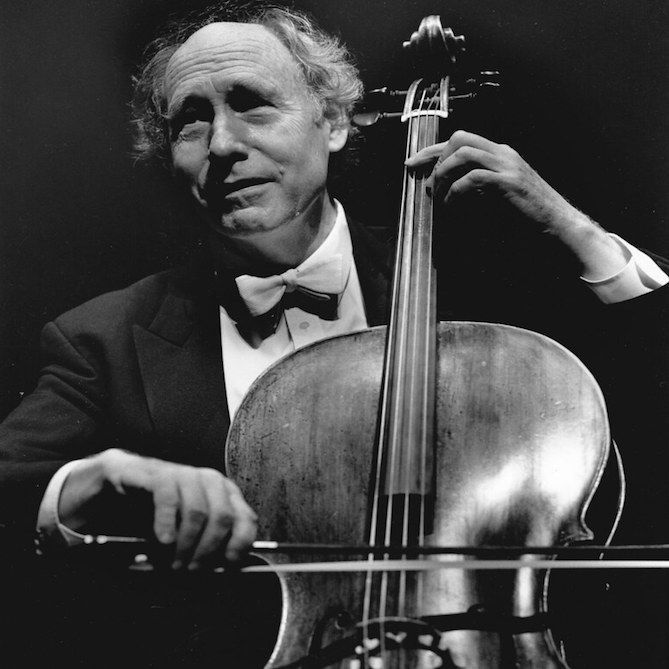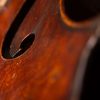
Remembering Anner Bylsma (1934 – 2019)
Blogmaster
With heavy hearts we share the loss of Dutch cellist, Anner Bylsma. His presence and artistry have made an enormous impact, profoundly influencing the lives of generations of cellists. Over the course of his career, Bach played a significant role in Bylsma’s life as reflected in his performances, writings, and the two sets of recordings of the complete Cello Suites he made in 1979 and 1992. In fact, his first recording was the first ever to be recorded on gut strings, achieving a significant stride in the period performance movement.
Bylsma was a strong believer in the essential accuracy, and therefore sanctity, of the Anna Magdalena Bach manuscript of the Cello Suites. He accepted there were some mistakes but not that all performance indications were suspect and therefore optional. In his book, Bach, the Fencing Master, he offers performers the opportunity to rediscover the clarity and charm of the Suites. He shares:
“A Sphinx, that’s what Bach’s solo pieces for the violin and for the cello have become. Three hundred years of opinions of lesser men – always lesser men that Bach – have made it impossible to read what it says in the wonderfully clear quill-pen texts, of which we all have copies. String music used to be a world of its own, full of idiosyncrasies like up- and down bow, crossing of strings, open string-notes, separate or slurred notes, playing near or far from the bridge, double stops with different lengths and tones with vibrato, with accents, or special diction in the middle.
Nowadays, preconceived ideas of people, who do not even play a string-instrument themselves, often are directing our bow-arms. My books about these works should not be necessary at all for anybody, but at this moment they will be one of the few ways to re-discover some of the lost charm of our sphinxes. When string-playing is left to people who can only play to the tune of a ‘conductor’, the price of a Stradivari will soon be equal to that of a good saxophone.”
Anner Bylsma, born Anne Bijlsma in 1934, received his first lessons his father, a multi-talented musician. At the age of 16, he enrolled at the Royal Conservatory and The Hague, to study with Carel van Leeuwen Boomkamp, principal cellist with the Concertgebouw Orchestra Amsterdam. It was Boomkamp who introduced Bylsma to the Baroque cello. Bylsma won the school’s Prix d’excellence in 1957 and later won first prize in the Casals Competition in Mexico in 1959. Bylsma became principal cellist of the Dutch National Opera orchestra, followed by a six-year stint as principal of the Concertgebouw Orchestra (1962 to 1968). He then left his position there to pursue his solo and chamber music interests.
With his wife, violinist Vera Beths, and violist Jürgen Kussmaul, he set up a flexible string ensemble, L’Archibudelli – the name being a portmanteau of bow and guts – which made a number of recordings of Classical and Romantic repertoire on period instruments.
Bylsma retired from performance in 2006, naturally choosing Bach for his final public recital during the first Amsterdam Cello Biennale. He maintained contact with the cello world through masterclasses and teaching, and was a regular fixture at the Biennale, which named its award after him.
CelloBello would like to invite all former students, colleagues and friends of Mr. Bylsma to contribute to this tribute. Please send your reflections to our Blog Master at jamie@cellobello.org.
——————
Annsi Kartunnen:
“People leave important and influential marks in our lives in many ways. Anner Bijlsma was as unique as a musician can ever be. He brought history and future together. He found every bit of information and threw his endless imagination on top of it to allow us feel what a miracle every piece of music was when it was first played and heard.
Anner showed that curiosity and enthusiasm are the only tools that matter. He played every piece by every composer from every period like it was the finest masterpiece ever written. When you listened to him you KNEW that what he believed in you had to believe in as well. And you knew that when he played a piece it was the only way to play it until the following day when he would discover another only way to play the same piece. He knew that the truth is in believing, truth is in the moment and truth is in questioning your own truth.
I am thankful for every moment I received Anner’s generosity as a friend and colleague. He is my teacher without ever having been one. He will always be my model as one of the very rare true human beings I have ever met. We are so lucky to have had Anner Bijlsma.”
